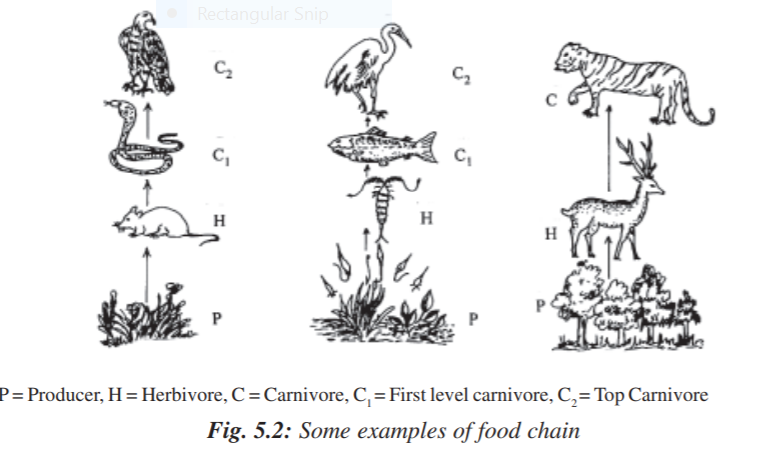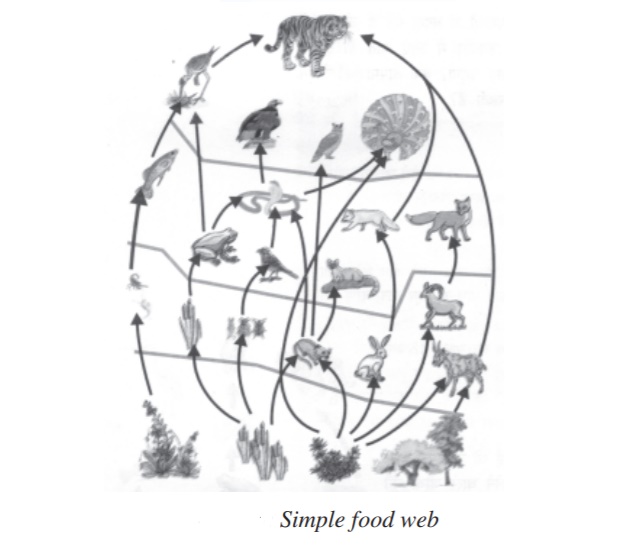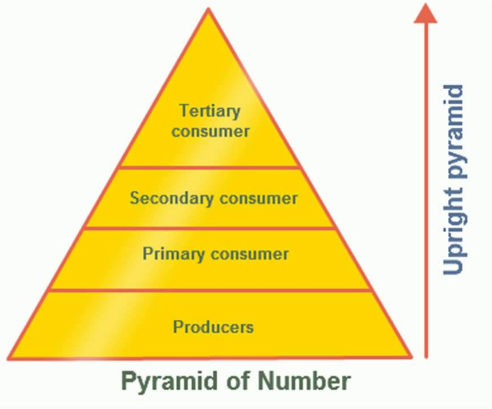(1)(1)(1)(1)-1631274591424.jpeg)
EDEN BLOGS
FUNCTIONS OF ECOSYSTEM
(1)(1)(1)(1)-1631274591424.jpeg)
(1)(1)(1)(1)-1631274591424.jpeg)
Ecosystems are complex dynamic system. They perform certain functions. These are:-
(i) Energy flow through food chain
(ii) Nutrient cycling (biogeochemical cycles)
(iii) Ecological succession or ecosystem development
(iv) Homeostasis (or cybernetic) or feedback control mechanisms
Ponds, lakes, meadows, marshlands, grasslands, deserts and forests are examples of natural ecosystem. Many of you have seen an aquarium; a garden or a lawn etc. in your neighbourhood. These are man-made ecosystem.
TYPES OF ECOSYSTEMS:
Ecosystems are classified as follows:
(i) Natural ecosystems (ii) Man made ecosystems
(i) Natural ecosystems
(a) Totally dependent on solar radiation e.g. forests, grasslands, oceans, lakes, rivers and deserts. They provide food, fuel, fodder and medicines.
(b) Ecosystems dependent on solar radiation and energy subsidies (alternative sources) such as wind, rain and tides. e.g tropical rain forests, tidal estuaries and coral reefs.
(ii) Man made ecosystems
(a) Dependent on solar energy-e.g. Agricultural fields and aquaculture ponds.
(b) Dependent on fossil fuel e.g. urban and industrial ecosystems
ECOSYSTEM FUNCTION–ENERGY FLOW THROUGH ECOSYSTEM
Food chains and energy flow are the functional properties of ecosystems which make them dynamic. The biotic and abiotic components of an ecosystem are linked through them.
Food Chain
Transfer of food energy from green plants (producers) through a series of organisms with repeated eating and being eaten is called a food chain. e.g.
Grasses → Grasshopper → Frog → Snake → Hawk/Eagle
Each step in the food chain is called trophic level. In the above example grasses are 1st and eagle represents the 5th trophic level.
During this process of transfer of energy some energy is lost into the system as heat energy and is not available to the next trophic level. Therefore, the number of steps are limited in a chain to 4 or 5. Following trophic levels can be identified in a food chain.
(1) Autotrophs: They are the producers of food for all other organisms of the ecosystem.
They are largely green plants and convert inorganic material in the presence of solar energy by the process of photosynthesis into the chemical energy (food). The total rate at which the radiant energy is stored by the process of photosynthesis in the green plants is called Gross Primary Production (GPP). This is also known as total photosynthesis or total assimilation. From the gross primary productivity a part is utilized by the plants for its own metabolism. The remaining amount is stored by the plant as Net Primary Production (NPP) which is available to consumers.
(2) Herbivores: The animals which eat the plants directly are called primary consumers or herbivores e.g. insects, birds, rodents and ruminants.
(3) Carnivores: They are secondary consumers if they feed on herbivores and tertiary consumers if they use carnivores as their food. e.g. frog, dog, cat and tiger.
(4) Omnivores: Animals that eat both plant and animals e.g. pig, bear and man
(5) Decomposers: They take care of the dead remains of organisms at each trophic level and help in recycling of the nutrients e.g. bacteria and fungi.
There are two types of food chains:
(i) Grazing food chains: which starts from the green plants that make food for herbivores and herbivores in turn for the carnivores.
(ii) Detritus food chains: start from the dead organic matter to the detrivore organisms which in turn make food for protozoan to carnivores etc.
In an ecosystem the two chains are interconnected and make y-shaped food chain. These two types of food chains are: -
(i) Producers → Herbivores → Carnivores
(ii) Producers → Detritus Feeders → Carnivores
FOOD WEB:
Trophic levels in an ecosystem are not linear rather they are interconnected and make a food web. Thus food web is a network interconnected food chains existing in an ecosystem. One animal may be a member of several different food chains
The flow of energy in an ecosystem is always linear or one way. The quantity of energy flowing through the successive trophic levels decreases as shown by the reduced sizes of boxes
ECOLOGICAL PYRAMID
Ecological pyramids are the graphic representations of trophic levels in an ecosystem. They are pyramidal in shape and they are of three types: The producers make the base of the pyramid and the subsequent tiers of the pyramid represent herbivore, carnivore and top carnivore levels.
(1) Pyramid of number: This represents the number of organisms at each trophic level. For example in a grassland the number of grasses is more than the number of herbivores that feed on them and the number of herbivores is more than the number of carnivores. In some instances, the pyramid of number may be inverted, i.e herbivores are more than primary producers as you may observe that many caterpillars and insects feed on a single tree.
(2) Pyramid of biomass: This represents the total standing crop biomass at each trophic level. Standing crop biomass is the amount of the living matter at any given time. It is expressed as gm/unit area or kilo cal/unit area. In most of the terrestrial ecosystems the pyramid of biomass is upright. However, in case of aquatic ecosystems the pyramid of biomass may be inverted e.g. in a pond phytoplankton are the main producers, they have very short life cycles and a rapid turn over rate (i.e. they are rapidly replaced by new plants). Therefore, their total biomass at any given time is less than the biomass of herbivores supported by them.




{{doubts.user.firstName}}
{{doubts.createdAt | formatDate}}